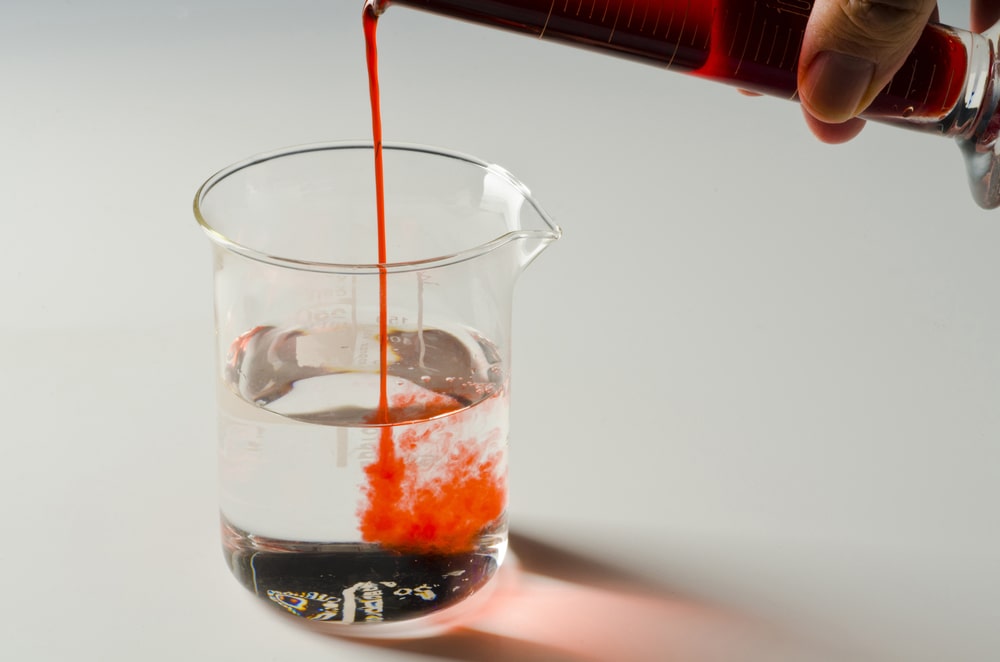Although there are three major types of liquid/liquid systems, they are mostly categorized into two categories based on the solubility of one material in the other. Complete miscibility and partial miscibility are the two types of miscibility. The common solubilities of the components in liquid-liquid systems are known as miscibility. When two substances are only partially miscible, they are said to be partially miscible. When the two liquids are combined, two layers form, each containing some of each liquid. Each of these two mixed layers contains some of both liquids, such as phenol and water. Some liquids (for example, water, and mercury) are practically immiscible, while others (for example, water and ethyl alcohol or acetone) mix in all amounts.
The temperature and content of two liquids affect their mutual solubility or miscibility. Two liquid phases can be detected when two liquids (liquid A and liquid B) are partially soluble in each other. Each phase comprises liquid A and liquid B in proportions that reflect their mutual solubility at equilibrium. At high temperatures, some systems are completely miscible (i.e., they form a one-phase liquid), yet at lower temperatures, they divide into two liquid phases. In a plot of temperature vs mole fraction, these systems exhibit an upper consolute temperature, TUCT. Other systems are completely miscible at low temperatures, but split into two phases at higher temperatures, resulting in a lower consolute temperature, TLCT.
Water and oil don’t mix. When you pour 10 mL olive oil into 10 mL water, you get two distinct layers separated by a curved meniscus. Each layer is the same volume as the original liquids and has a similar composition. The liquids are referred to as “immiscible” because they appear to mix very little. Pouring grain alcohol into the water, for example, produces a single liquid phase. Between the alcohol and the water, no meniscus forms, and the two liquids are called “miscible.” If only a trace amount of one of the liquids is present, nearly any pair of liquids are miscible.
Many liquid combinations fall somewhere in the middle of these two extremes. If equal quantities of two liquids are shaken together, a meniscus appears between two layers of liquid, but the volumes of the layers are not identical to the volumes of the liquids originally combined, the liquids are “partially miscible.” Shaking water with some organic acids, for example, produces two distinct layers, each of which contains water and acid (with one layer mostly water and the other, rich in acid.) When the attraction between like molecules is substantially stronger than the attraction between mixed pairings, liquids tend to be immiscible. However, there are numerous examples of liquids that are partially miscible with one another. If water is added to ether or ether is added to water and the mixture is shaken, a solution will form up to a point; beyond this point, further addition of water or ether will result in the formation of two liquid layers, one containing a saturated solution of water in ether and the other containing a saturated solution of ether in water. Conjugate solutions are two mutually saturated solutions in equilibrium at a temperature.
Two partially miscible liquids in contact with each other form a conjugate system. Their existence as two liquids in contact is due to the proportionate volumes of these liquids. A saturated solution of one liquid in the other, or vice versa, forms under certain conditions. Temperature can be used to increase the miscibility of a solution mixture. Phenol – water, nicotine – water, triethanolamine – water, and so on.
The mutual solubility of phenol-water solutions increases as the temperature rises. When phenol is added to water at room temperature, it produces a homogenous liquid. When the concentration of phenol in the solution reaches around 8%, adding more phenol causes the creation of a second liquid phase, which can be thought of as a water-in-phenol solution. The second liquid phase will vanish if the temperature is raised presently, and more phenol will be required to separate the liquid into two layers. The solubility curve of phenol in water can be estimated by increasing the amount of phenol in this way and watching the temperature at which the two layers vanish. Similarly, the solubility curve of water in liquid phenol may be obtained, and it is found that the solubility also increases with the rise of temperature. Because the concentration of water in the phenol layer and phenol in the water layer increases as the temperature rises. The two conjugate solutions’ compositions become increasingly similar, and at a certain temperature, the two solutions’ compositions become identical. The critical solution temperature, also known as the system’s consolute temperature, is the temperature at which the two layers’ compositions become identical and they become one layer. The two liquids are miscible in all proportions above this temperature.
Separation into two layers will occur if the resulting mixture is represented by a point in the area enclosed by the solubility curve, whereas a clear homogeneous solution will result if the total composition of the mixture and the temperature are expressed by a point outside the solubility curve.
Make sure you also check our other amazing Article on : Raoult’s law
